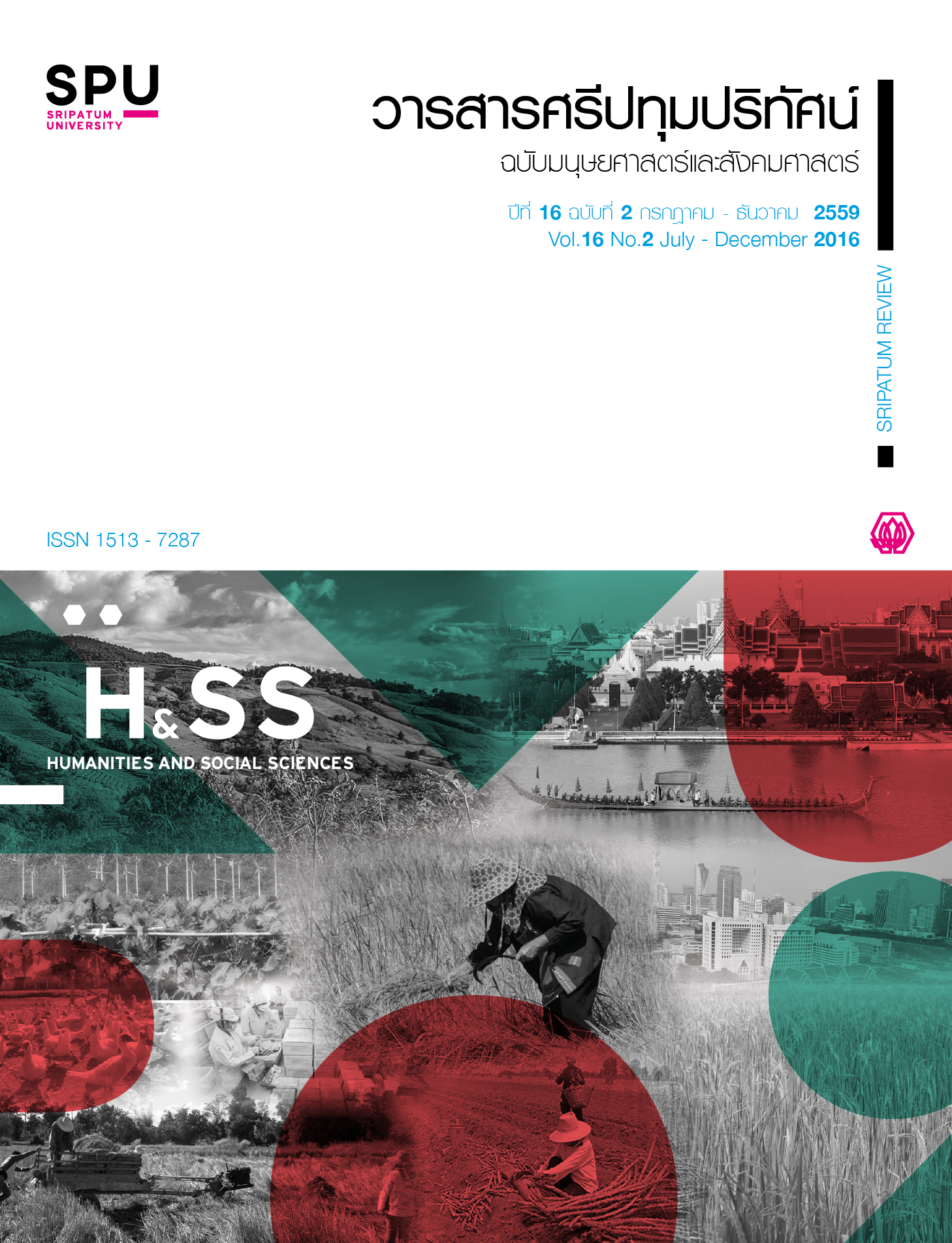THE DEVELOPMENT OF BALANCED ASSESSMENT
Main Article Content
Abstract
The objective of this research was to study the basic information and guidelines for development of a balanced assessment. This study was a qualitative research. Data were collected from studies of documents and related researches, and from in-depth interviews of seven experts including four evaluation experts and three experts on curriculum and instruction. Also, the researcher conducted a focus group discussion involving ten teachers from schools under Rayong Educational Service Area Office 1. Research instruments consisted of (1) an in-depth interview form, and (2) a handbook for focus group discussion. The data were analyzed using content analysis.
The results showed guidelines for the implementation of the balanced assessment. It would be more effective to focus on the formative assessment of student development which happened in the classroom every day. Assessment of student development consisted of eight steps as follows: Step 1: Specification of learning content, Step 2: Setting the learning management goal, Step 3: Determining the learning management design, Step 4: Creating evaluation instruments and evaluation criteria, Step 5: Organizing learning activities, Step 6: Reflection on assessment outcomes, Step 7: Modifying teaching methods, and Step 8: Summative assessment. The teachers must pay attention to the emotional dynamics of the students by creating inspiration for learning in the students to enable them to analyze assessment results to find their strengths and weaknesses and to look for opportunities to improve their own learning.
Article Details
1. กองบรรณาธิการสงวนสิทธิ์ในการพิจารณาและตัดสินการตีพิมพ์บทความในวารสาร
2. บทความทุกเรื่องจะได้รับการตรวจสอบทางวิชาการโดยผู้ทรงคุณวุฒิ แต่ข้อความและเนื้อหาในบทความที่ตีพิมพ์เป็นความรับผิดชอบของผู้เขียนแต่เพียงผู้เดียว มิใช่ความคิดเห็นและความรับผิดชอบของมหาวิทยาลัยศรีปทุม
3. การคัดลอกอ้างอิงต้องดำเนินการตามการปฏิบัติในหมู่นักวิชาการโดยทั่วไป และสอดคล้องกับกฎหมายที่เกี่ยวข้อง
References
สำนักวิชาการและมาตรฐานการศึกษา. 2552. เอกสารประกอบหลักสูตรแกนกลางการศึกษาขั้นพื้นฐานพุทธศักราช 2551 แนวปฏิบัติการวัดและประเมินผลการเรียนรู้. กรุงเทพฯ : สำนักงานคณะกรรมการการศึกษาขั้นพื้นฐาน กระทรวงศึกษาธิการ.
องอาจ นัยพัฒน์. 2553. การวัดประเมินในชั้นเรียน : วิวัฒนาการและแนวคิดใหม่เพื่อพัฒนาการเรียนรู้. วารสารศรีนครินทรวิโรฒวิจัยและพัฒนา (สาขามนุษยศาสตร์และสังคมศาสตร์), 2 (3), 1-12.
Burke, Kay. 2010. Balanced assessment : from formative to summative. United States of America :Solution Tree Press.
Nichols, Paul D. 2010. What is a Balanced Assessment System. Test, Measure & Research Services Bulletin, 11(1),1-2.
Rizo, Felipe Martínez. 2009. Formative Classroom Assessment and Large Scale Assessment : Toward a More Balanced System. Revista Electrónica de Investigación Educativa, 11(2), 1-10
Stiggins, R. J. 2008. A Call for the Development of Balanced Assessment Systems. Portland, OR : ETS Assessment Training Institute.
Stiggins, R. J., Arter, J. A., Chappuis, J., & Chappuis, S. 2004. Classroom Assessment for student learning : Doing it right—using it well. Portland, OR : ETS Assessment Training Institute.


